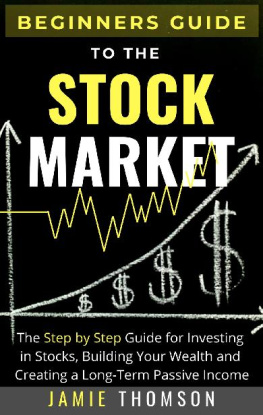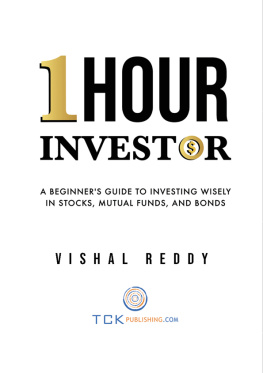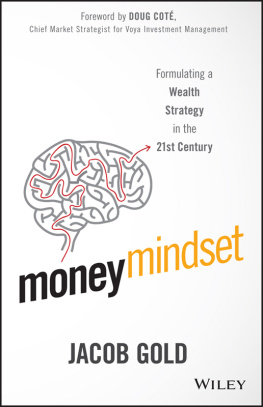Anupam Gupta is a chartered accountant, author and podcast host. He worked for two decades as an investment research analyst and as a thematic research consultant in institutional equities with leading brokerages such as CLSA, HDFC Securities, Barclays and Ambit Capital. In 2020, Anupam, with Saurabh Mukherjea, co-authored the bestselling book The Victory Project: Six Steps to Peak Potential. Since 2017, Anupam has been hosting Paisa Vaisa, a free-to-air personal finance podcast available on all podcasting platforms. Paisa Vaisa has almost 2 million downloads and won the Best Business Podcast award at the Asia Podcast Awards held in 2019.
The main thing about money, Bud, it makes you do things you dont want to do.
It aint what you dont know that gets you into trouble. Its what you know for sure that just aint so.
Foreword
Change is a continuous process. You can discern a change only once in a generation. Because once you discern it, you are already there. So in these last 50 years I can discern only two changes, but they are large because a continuous process is being focussed at two or three points. The next big change will come with my son. There are spans of transition. There are much bigger spans with the succeeding generations.
My son will go through a very large change in circumstances in many ways. In the family, in the school surroundings, in the job market, everywhere. I grew up in a half ritualistic background. My son will have no ritualistic background. But if my son loses the rituals even further, he could still be rooted locally, within his peer group. There will be many like him. Society is moving that way.
V.S. Naipaul, A Million Mutinies Now, 1990
Very few books capture the vastness of India, let alone the diversity and the far-reaching impact of generational changes. The paragraphs quoted above are from a book written as far back as 1990. Many of us in our late forties or early fifties romanticize the change that our generation has seen post-Liberalization in 1991that life has changed for the better. But India had seen gut-wrenching change even before that, as you can read in the two paragraphs quoted above, taken from Naipauls conversation with Pravas, an engineer who was thinking of university education and a career in 1962. Visceral, transformative change in India happens every once in a generation. We are in the midst of one such change nowthe shift of savings towards financial assets from physical assets such as gold and real estate. This is an important change that will play out for many years to come since India has a long way to go from unremunerative and unproductive investments like real estate and gold towards equities.
We set up Marcellus Investment Managers in late 2018, and our travel of the past four yearswhere we met tens of thousands of affluent Indian families and high-net-worth individuals (HNIs)has convinced us of this powerful generational change. We have written about this change in several publications, including Coffee Can Investing: The Low Risk Road to Stupendous Wealth (by myself, Rakshit Ranjan and Pranab Uniyal) in 2018, and Diamonds in the Dust: Consistent Compounding for Extraordinary Wealth Creation (by myself, Rakshit Ranjan, and Salil Desai) in 2021. Our travel and research over most of these past few years have convinced us that the shift toward financial assets is not only inevitable but essential for Indian families to prepare themselves better for their retirement. Even the RBI, in their 2017 Household Survey, has warned of the deleterious effect of going into retirement laden with real estate and gold. The RBI personnel are not known to be alarmist in their use of the English language. So when they write a paragraph such as the one below, it suggests that they are really concerned about this issue:
Over the coming decade and a half, the elderly cohort is expected to grow by 75 percent. Only a small fraction of this cohort has saved in private pension plans. Moreover, a large segment of the population of households in all age cohorts has not actively taken steps to insure adequate financial coverage during retirement. The need to finance adequate consumption during retirement is therefore a looming issue, and when combined with the low penetration of insurance, households appear particularly vulnerable to adverse shocks later in life.
What drives the pre-eminence of physical assetsreal estate and goldwhen it comes to Indian households investments? In our book Diamonds in the Dust, my colleagues and I and bust four myths that we encountered during our meetings with HNIs, myths which we believe have driven Indian households to invest in real estate and gold:
Myth 1: Gold will help me protect my wealth.
Reality: This is patently wrong since the BSE Sensex has outperformed gold in most long-term time periods. The 2017 RBI report also makes a case for reallocation of wealth from gold to other financial assets.
Myth 2: Real estate will help me grow my wealth.
Reality: Home prices have at best kept pace with consumer inflation. Moreover, with residential rental yields (23 per cent) being far above home loan rates (7 per cent), there is room for home prices to correct going forward. Besides, investment in real estate is cumbersome, illiquid and saddled with high transaction costs.
Myth 3: Debt mutual funds offer decent returns with low volatility.
Reality: This myth has been perpetrated by armies of salespeople who show debt fund returns as safer than equities with returns higher than fixed deposits. However, the shuttering of some prominent mutual fund schemes (following investments in high-risk, low-quality paper in their debt funds) has busted this myth.
Myth 4: GDP growth drives the stock market. So, if I (or my wealth manager) can time the economic cycle, I can time the stock market.
Reality: As we have shown in our research (Marcellus, 2019), the relationship between GDP growth and earnings growth of the NSE Nifty 50 has broken down in the recent past. The Nifty does not capture the dynamism in Indias economy, considering that in the past decade (2011-2020) the Nifty has lagged nominal GDP growth in terms of price performance.















